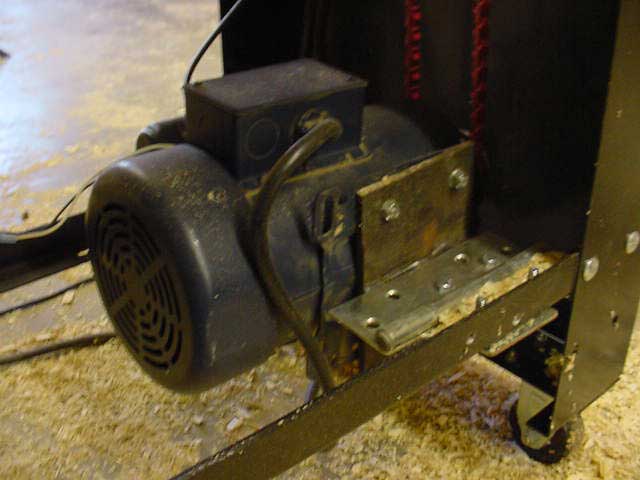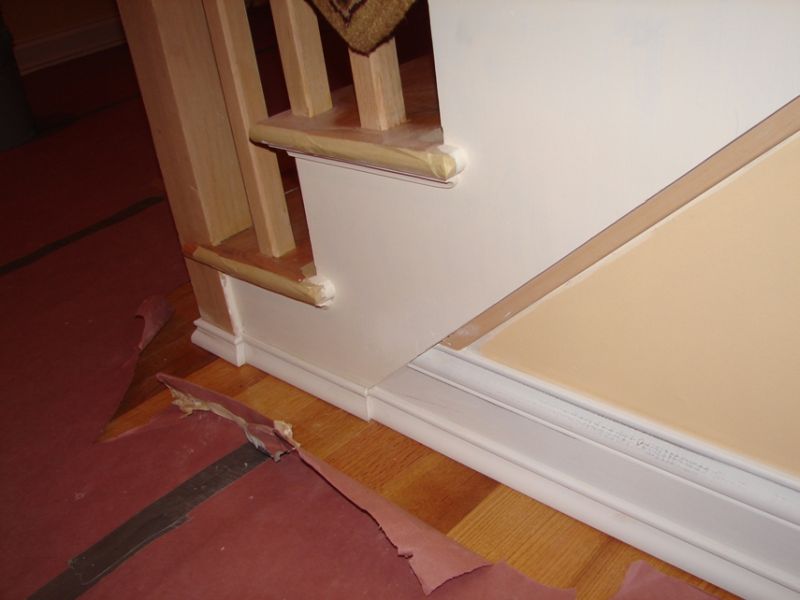Question
I have a 718 Woodmaster and am going to make a chair railing. I have the moulding knife, and it cuts the sides also. When I ran my first piece at full cut it really chunked out some big pieces. I slowed it way down but there were still some chunks. The knife and everything is setup ok. My question is, should I make two passes, or is this normal? Any help is appreciated.
Forum Responses
(Architectural Woodworking Forum)
From contributor T:
As far as molding goes, the harder or denser the wood, the more passes I will make. It helps to eliminate tear-out, but also burning as well. Wood that burns easily like maple will require an extra pass or two unless you really feel like sanding out a ton of burn marks.
Use one single link belt so that the weight of the motor applies tension to the belt. The two belts they are using with no tension sets up excessive head vibration causing tearout and bad chatter.
The bedboard is causing the tearout. The motor belt drive is causing the chatter. The two belts simply fight each other. You can make beautiful moulding with a Woodmaster single knife, but you must make these modifications.
I would suggest that you take the plastic bedboard and throw it away. Try making these modifications, or else buy a Williams and Hussey. Here are a couple of pictures below of what I did.

I have personally observed this in certain woods. I run a molding at 1/32" less than full profile depth and get no tearout at all. Then I set the machine 1/32" deeper to run a finish cut and get some tearout. This is not a hard, fast rule but in some woods it does happen.
I do get the best results overall by running the moldings at nearly full depth in one pass, and then running one more pass taking off very little (feather light shavings that float in the air.) I have never had maple or any other wood burn in my single knife molder. If you are getting burns, either something is wrong with your feed or your knives are way too dull.
I agree with Contributor G about throwing away factory bed boards. I have about 40 profiles and I run all but about four of them on a piece of .75" melamine bed board the same size as my molder table. This is secured to the molder tables with machine screws counter sunk at both ends. When I make a new knife I run a test until I have a good sample. I save some of the sample material for later setups.
So, to run a profile, I install the required knife, position the knife holder or decide where to put the knife/knives in relation to the molder table. Then I take the sample piece and use it to position one of my two side guides by lowering the knife until it registers in the sample molding piece (the machine is turned off and unplugged.) My side guide material is .25" scrap mdf (you know, leftovers from cabinet backs, 1/4" one side melamine.)
Once I get the first guide screwed down to the 3/4" melamine auxiliary bed board, I place one of my molding blanks against it and then place the second .25" guide piece on the other side of the molding blank and screw it down with 5/8" long screws. I place my setup piece between the two guides and fine tune the side to side placement of the knife.
Anyway, this got long but I wanted to say that .25" tall guide fences work very nicely for 99 percent of my needs.
The 718 has a dust collection problem. If you run hickory at 60%, then you can only run about 20 to 30 feet, then stop and clean out the machine or else it will stall out with debris and jam the rollers, but it's the only way you can run hickory in that machine. Modify your motor and belt and you won't believe the difference. You can make moulding chatter free and almost as smooth as silk, even with a single knife.
If you look at the end of the molding and draw an angled line at the deepest part of the profile, you see that if you ran the molding bedded at an angle, you can grind a narrower knife and it in turn removes the wood more evenly across the width of the cut.
Bed boards that are not flat with something solid under them will bounce around and really tear up your moulding. That is why planers have solid steel beds. The two belts in your machine have no way to apply even tension, and really no tension at all. Watch them as they turn. They flop around all over the place. This vibration is transferred to the head and shows up in the form of poor quality moulding.
I assure you I wouldnít recommend this method if it didnít produce a quality molding. You apparently had a problem at some point with a bed board that was warped or something.
What can be done with these machines is almost endless; so donít be afraid to experiment with different ways because you had one bad experience (be safe about it though). I hand grind my knives and I have over 30 profiles so far.
I have several angled auxiliary bed boards for running moldings that would in some cases require a knife depth that would exceed the machines capacity if I ground the knife to run the molding on a flat bed board. I even have a few that run the molding blank set at an angle and are curved at the same time. The moldings come out the other end crisp and smooth.
In thinking about what you are saying about bedboards bouncing around, and itís hard for me to figure out what could have been going on with your machine, because with mine, even if a flat auxiliary bed board had say, a crown in it right under the cutter head, the pressure from the feed rollers is transferred through the molding blank and would flatten it out. Maybe you didnít have enough feed roll pressure at that point?
I might also add that most of the guys can't afford the machinery to grind their own knives, so they have to run standard profiles that might not perform well in their machines without modification. Wm claims their machine will hog out 1 1/4", so crown shouldn't be a problem. I guess what I'm trying to say is that you should not have to do what you are doing if the machine was properly setup and balanced.
Now think of a crown molding. Imagine if it were a solid block of wood instead of having that triangular shaped hollow space behind it. If it were a solid block of wood that you had to run through your molder standing upright, you would not be able to put a molding knife that deep in your molder.
So, the crown moulding knife is ground so that the molding blank lies flat while being shaped, not in the position it will be after it is installed on a cabinet. That is what I was talking about, grinding molding knives in such a way (not angled) that relatively deep cuts can be made in a shallow manner. This method uses narrower high-speed steel stock than a knife ground for an upright run molding.
My little molder is working correctly. I am doing this method because it allows me to run moldings that otherwise would have to be outsourced. Other people in the industry do this also.
The angled bedboard is sometimes as simple as a 2x6 with a v-block cut along its length. You somehow got the impression that I was disagreeing with your postings, not the case. I was adding information related to small single knife molder methodology.
I don't know why WM doesn't correct the motor and belt drive. They could use single pulleys instead of duals and to save money, send one belt, instead of two, use the same belt for the drum sander instead of sending a third belt, eliminate two tie bars, and manufacture one of the finest little moulders ever made, cheaper, and many times more user friendly. All they need is a little hinge and motor bracket and maybe a little handle tied to the motor bracket to lift it up and down for easy removal of the belt when changing heads. No more blood blisters trying to get those two belts off.
Comment from contributor A:
The two drive belts are a problem. One power twist link belt makes a huge difference. The poly bed board is initially a problem that is easily rectified without replacing it. Mark the centerline of the cutterhead spindle on the bed board. Then draw a line parallel about an inch and a half to either side of that centerline. Drill through the bed board and cast iron a clearance hole for 1/4-20 flat head screws. Four screws/nuts should do, spaced 6" apart. Countersink the bed board for the screw heads.
If you are using Woodmaster knives, check them for balance. Using the 700C knife holder requires the knife and gib to weigh 8.5 ounces. I bought the starter set and not one knife set was within 1/2 ounce of the 8.5. Get them within 1/10 gram and you will get chatter free moulding that does not require sanding.
If you do the above you will not need to hinge the motor. I have read about owners changing pulley sizes to get faster feed rates. This may be an easier way. Remove the screws on the feed control box and pull the control out and look for two white recessed plastic screws marked min and max. Turning the max screw clockwise will increase your top-end feed rate without affecting your min rate. I adjusted my max at1/4 turn and now have a maximum feed rate at 36'/min. The 718 is a gem of a machine with limitless abilities.
